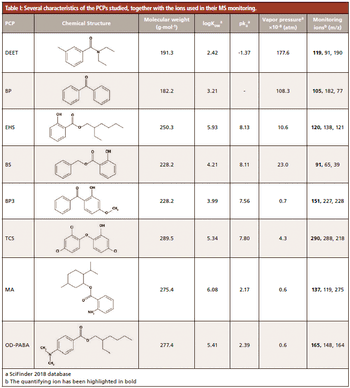
Special Issues
Click the title above to open the Recent Developments in Sample Preparation 2019 special issue in an interactive PDF format.

Special Issues
Click the title above to open the Recent Developments in Sample Preparation 2019 special issue in an interactive PDF format.

Special Issues
The field of sample preparation is undergoing revolutionary change, largely governed by the need for miniaturization while maintaining high selectivity and high analyte enrichment. How up-to-date are you in the advances of sample preparation for chromatographic analysis?

Special Issues
In this study, the analysis of contaminants found in environmental waters and originating from personal care products is addressed using metalorganic frameworks (MOFs) in combination with liquid chromatography (LC). This work expands the use of MOFs from gas chromatography to LC and also meets the requirements of green analytical chemistry.

Special Issues
Nanomaterials are extremely useful as sorbents for sample preparation, because of their varied morphologies, high surface area, surface-tovolume ratio, porosity, and ability to interact with samples in a variety of ways. Here, we review how nanomaterials are being used in a variety of sample preparation techniques, such as dispersive solid-phase extraction (dSPE), solid-phase microextraction, stir-bar sorptive extraction, and matrix solid-phase dispersion.

Special Issues
A simple, fully-automated method is proposed to analyze extractables and leachables-compounds that are released from packing materials into drugs during storage-using SPME-GC×GC–MS. This method avoids the use of sample preparation solvents and reduces sample handling, and is ideal for routine use in quality control.

Special Issues
Crude (4-methylcyclohexyl)methanol (MCHM) is a chemical contaminant that must be monitored in fresh water environments, because of significant health risks to surrounding human populations. A new method for MCHM analysis was developed using solid-phase microextraction (SPME) and thin film microextraction (TFME) combined with GC–MS. Both methods achieved limits of quantitation lower than standard methods using SPE.

Special Issues
A simple, automated, and fast method to quantify complex odorants in foods is described using stir-bar sorptive extraction (SBSE) combined with fast enantioselective GC–MS analysis. The total analytical method takes only 30 minutes and does not require any sample pretreatment.